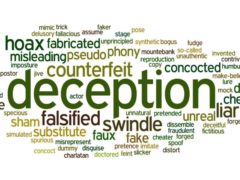Winning the Cyber War Preventing Ransomware with Deceptive Solutions
In today’s digital battlefield, ransomware attacks pose a significant threat to organizations worldwide. This article explores the importance of winning the cyber war by deploying preventative solutions that effectively distort the ransomware perception of the environment, making malicious actors’ efforts futile before damage occurs.
Understanding the Cyber War and the Role of Prevention
The cyber war is a continuous conflict between attackers who seek to exploit vulnerabilities and defenders who aim to safeguard digital assets. Ransomware attacks have grown increasingly sophisticated, using advanced tactics to bypass traditional security measures. Preventative solutions act as a frontline defense, not by merely reacting to threats but by proactively disrupting the attacker’s reconnaissance and execution phases.
One powerful approach is the use of environment distortion techniques. These solutions create controlled, deceptive environments that make it challenging for ransomware to accurately identify key systems or data to target. By providing false indicators about the environment, attackers are misled to terminate their malicious activities, to ultimately failing in deploying their encryption or data exfiltration capabilities.
Distorting Ransomware Perception: A Strategic Advantage
Distortion of perception in cybersecurity means deliberately manipulating how attackers perceive the environment. Ransomware operators rely heavily on accurate intelligence and reconnaissance to identify critical assets. By skewing this intelligence through deception technologies to deter ransomware from operating, defenders gain a strategic advantage.
- Creating False Trails: Providing deceptive signals that confuse automated attack tools and human adversaries alike.
- Dynamic Environment Changes: Continuously altering how the endpoint is perceived to the ransomware and preventing attackers from establishing a reliable map of the target environment.
- Security Manipulation: Creating false indication of various security tools within the environment to confuse ransomware from the real security capabilities available to the organizations, and protecting the use of existing tools from exploitation by threat actors.
This approach not only prevents successful infiltration but also generates valuable intelligence about attacker behavior and tactics. Organizations can then improve their defenses based on real-world attack scenarios, creating a feedback loop that strengthens security over time.
Conclusion
Winning the cyber war against ransomware requires more than reactive defenses – it demands proactive, preventative solutions that distort attackers’ perception of the environment. By leveraging deception technologies and environment distortion, organizations can disrupt ransomware campaigns early, minimize risk, and gain critical intelligence. Ultimately, these strategies are essential for building resilient cyber defenses in an ever-evolving threat landscape.
Don’t Miss a Thing
Sign up today and we’ll send an email when new posts come out.
We collect and use this information in accordance with our privacy policy.


